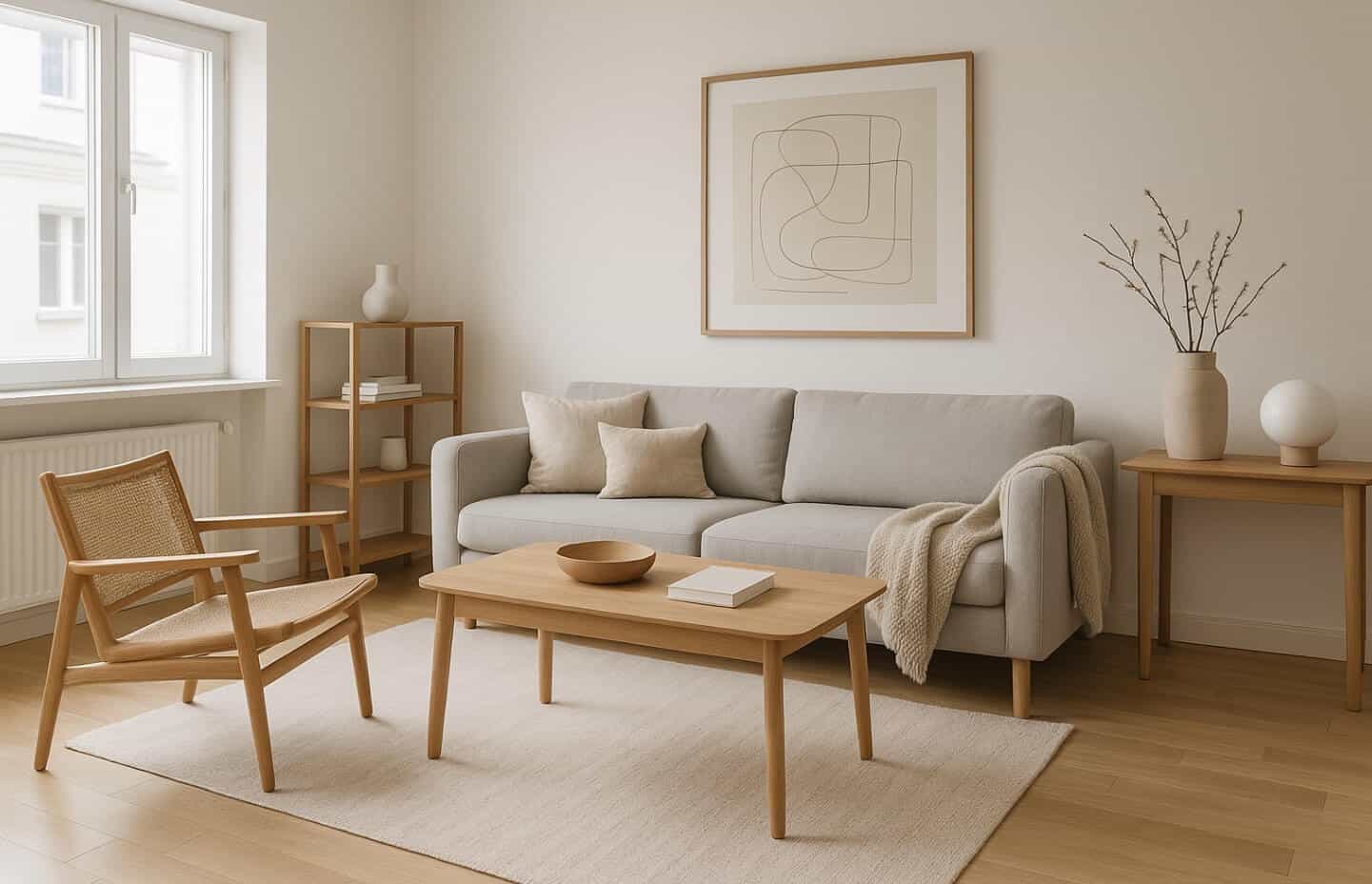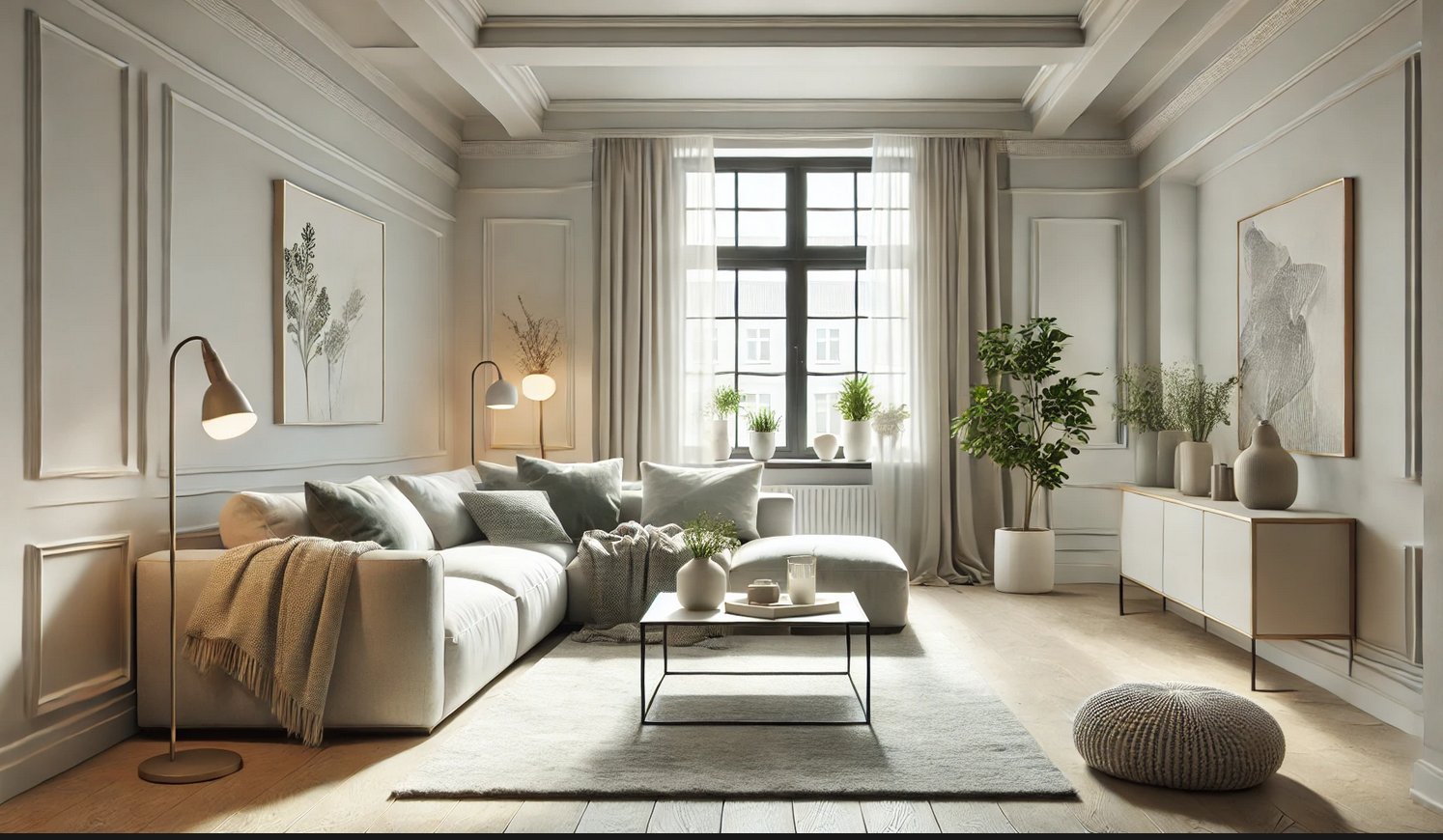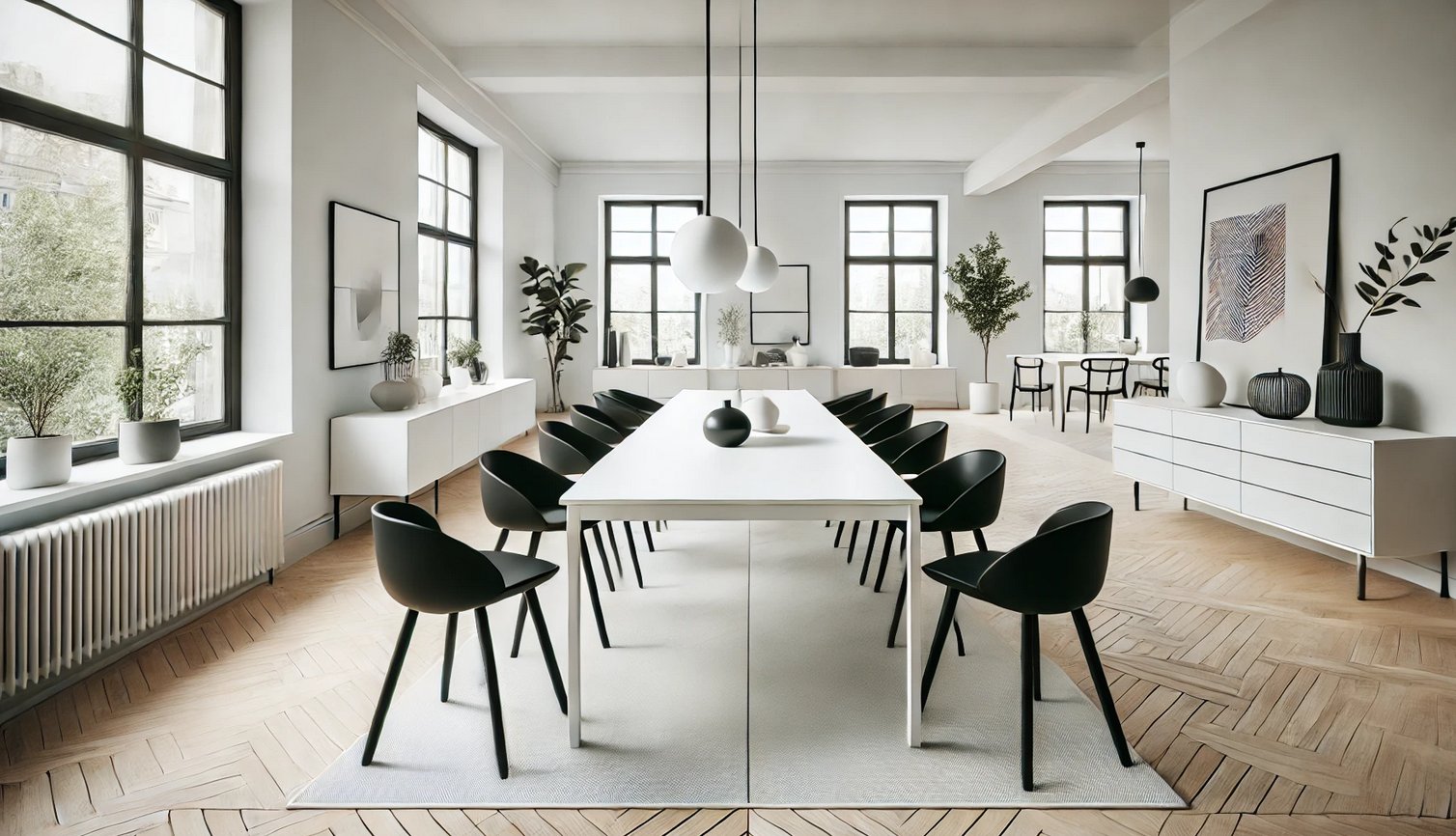Wooden furniture has been a staple in homes across centuries, bringing warmth and character to spaces that few other materials can match. From rustic wooden tables that anchor dining rooms to elegant plank tables that showcase natural grain patterns, wood continues to be a preferred choice for furniture makers and homeowners alike. The appeal of wooden furniture lies not just in its visual beauty, but also in its durability, versatility, and sustainable nature. When properly cared for, wooden pieces can last for generations, developing a rich patina that tells the story of its use through time. This enduring quality makes wooden furniture both a practical choice for daily use and a meaningful addition to any home, capable of adapting to changing styles while maintaining its fundamental charm.
Historical significance of wooden furniture
The story of wooden furniture stretches back thousands of years, with evidence of its use found in ancient Egyptian tombs and Roman households. Wood has remained the material of choice throughout human history due to its widespread availability and relatively easy workability. Early wooden tables were simple plank constructions, often made from a single piece of timber split down the middle. As craftsmanship evolved, so did the complexity and beauty of wooden furniture. The Middle Ages saw the rise of oak as a preferred material, valued for its strength and resistance to rot. During the Renaissance, walnut gained popularity for its rich color and fine grain, allowing craftsmen to create more intricate designs. Today a wooden table still looks quite impressive in many interior designs.
The 18th century marked what many consider the golden age of wooden furniture craftsmanship. Master woodworkers like Thomas Chippendale and George Hepplewhite developed distinctive styles that continue to influence furniture design today. Their wooden tables and chairs featured elegant proportions and detailed carvings that showcased the natural beauty of mahogany and other exotic woods. These pieces were not merely functional objects but works of art that displayed the wealth and taste of their owners.
Wood has always held cultural significance beyond its practical applications. In many traditions, specific woods carry symbolic meaning – oak representing strength and endurance, cherry symbolizing rebirth, and walnut signifying wisdom. The grain patterns in wooden furniture tell the story of the tree’s growth, with each piece possessing unique markings that cannot be precisely replicated. This individual character gives wooden furniture a sense of soul that mass-produced items often lack.
The relationship between humans and wooden furniture reflects our deeper connection to forests and trees. From hand-carved ceremonial chairs to humble plank tables that gathered families for meals, wooden furniture has witnessed countless human moments throughout history. Unlike many modern materials, wood ages gracefully, developing a patina that records its use over time. This living quality makes wooden furniture not just an object but a companion that grows more beautiful and meaningful with passing years. In Nordic design they often use wooden furniture and makes it look stunning at the same time.
Read more about – The evolution of Nordic design
Types of wood used in furniture making
The choice of wood dramatically influences both the appearance and performance of wooden furniture. Hardwoods, derived from deciduous trees, generally provide superior durability and visual appeal compared to softwoods from coniferous trees. Oak stands as perhaps the most widely used hardwood for furniture construction, prized for its remarkable strength and distinctive grain patterns. White oak offers exceptional resistance to moisture, making it suitable for wooden tables in high-humidity environments, while red oak displays a warmer color palette with prominent grain features. Maple, another popular hardwood, provides exceptional hardness and resistance to wear, making it ideal for surfaces that endure heavy use like kitchen tables and workbenches.
For those seeking luxury in their wooden furniture, walnut delivers a rich, chocolate-brown color that deepens beautifully with age. Its straight grain and natural luster make it perfect for statement pieces like dining tables or executive desks. Cherry wood begins with a light pinkish tone that gradually matures to a deep reddish-brown, developing an increasingly rich character over decades. This aging process makes cherry wooden furniture particularly valued by those who appreciate how wood changes and improves with time.
The world of exotic hardwoods offers even more distinctive options for wooden furniture. Mahogany, with its reddish-brown color and exceptional stability, has been favored for fine furniture since the 18th century. Teak contains natural oils that make it extraordinarily resistant to rot, making it perfect for outdoor wooden furniture that must withstand the elements. These exotic species typically command premium prices due to their scarcity and the increasing restrictions on their harvest to protect endangered forests.
For more budget-conscious options, pine represents the most commonly used softwood for furniture. Though less durable than hardwoods, pine offers a light, clean appearance and takes stains exceptionally well. Reclaimed wood has gained tremendous popularity in recent years, with old barn beams and factory flooring finding new life as characterful plank tables and shelving. Each piece of reclaimed wooden furniture tells a story through its nail holes, weathering, and patina – characteristics that cannot be authentically replicated in new materials. This connection to history, combined with the environmental benefits of reusing existing resources, makes reclaimed wood furniture particularly appealing to environmentally conscious consumers.

Caring for wooden furniture
Proper maintenance of wooden furniture ensures its beauty and functionality for generations. Wood remains a living material even after becoming furniture, responding to its environment by expanding and contracting with changes in humidity and temperature. Understanding this natural behavior helps prevent common issues that can damage wooden pieces over time. Regular dusting with a soft, lint-free cloth prevents microscopic scratches that gradually dull the surface. For deeper cleaning, a mixture of mild soap and warm water works well for most finished wooden furniture, though it’s crucial to avoid soaking the wood and to dry surfaces promptly.
The finish applied to wooden furniture serves as its primary protection against damage. Different finishes require specific care approaches:
- Oil finishes (like tung or linseed oil) penetrate the wood and need periodic reapplication, typically every 6-12 months
- Polyurethane creates a hard, water-resistant shell but can yellow over time
- Shellac provides a warm, traditional look but offers less protection against moisture
- Wax finishes create a soft luster but require regular buffing and renewal
- Lacquer delivers a durable, high-gloss surface that resists most household chemicals
Wooden tables, particularly dining and coffee tables, face the greatest exposure to potential damage. Using coasters under drinks prevents water rings that can permanently mark the surface. Heat can damage even the most durable finishes, making trivets or mats essential under hot dishes. For wooden furniture with drawers or moving parts, occasional application of paste wax to runners ensures smooth operation while protecting against wear.
Sunlight represents one of the greatest threats to wooden furniture. UV rays gradually fade wood’s natural color, with some species like cherry and walnut particularly susceptible to sun bleaching. Position wooden furniture away from direct sunlight or use window treatments that filter UV rays. Maintaining appropriate humidity levels protects against the cracking and joint loosening that occurs when wood becomes too dry. In winter months, when indoor heating systems reduce humidity, consider using a humidifier to maintain levels between 40-60%. Seasonal changes may cause subtle movements in solid wooden furniture as it adapts to environmental shifts – a natural characteristic rather than a defect. Plank tables made from solid wood will show these seasonal movements more noticeably than engineered wood products. Minor scratches in wooden furniture can often be addressed with touch-up markers or fill sticks matched to the wood tone, while deeper gouges might require wood putty and refinishing. With proper care, wooden furniture develops a rich patina that enhances its beauty and tells the story of its life in your home.
Environmental impact of wooden furniture
The relationship between wooden furniture and environmental sustainability presents a complex picture with both positive and negative aspects. Wood stands as one of the few truly renewable furniture materials when harvested responsibly. Trees absorb carbon dioxide throughout their growth, effectively storing carbon that would otherwise contribute to atmospheric greenhouse gases. When transformed into wooden furniture, this carbon remains sequestered for the entire lifespan of the piece. High-quality wooden tables and chairs often remain in use for decades or even centuries, extending this carbon storage benefit far longer than most manufactured materials.
The environmental footprint of wooden furniture largely depends on sourcing practices. Responsibly harvested timber from certified sustainable forests ensures that new trees replace those harvested, maintaining forest ecosystems and biodiversity. The Forest Stewardship Council (FSC) and Programme for the Endorsement of Forest Certification (PEFC) provide widely recognized certification systems that verify sustainable forestry practices. Consumers can look for these certifications when purchasing wooden furniture to support responsible forest management.
Local sourcing further reduces the environmental impact of wooden furniture. A plank table made from locally harvested oak requires significantly less transportation energy than imported exotic hardwoods. Many small-scale furniture makers emphasize working with regional wood species, creating distinctive pieces that reflect local forest character while minimizing carbon emissions from shipping. This approach also supports local economies and maintains traditional woodworking knowledge within communities.
The manufacturing process for solid wooden furniture typically requires less energy than producing synthetic alternatives. While plastic and metal furniture production involves energy-intensive extraction of raw materials and chemical processing, wooden furniture making primarily relies on mechanical processes like cutting, joining, and finishing. Water-based finishes and natural oils have largely replaced more toxic traditional finishes, reducing the environmental impact of wooden furniture production. At the end of its useful life, wooden furniture can be repurposed, recycled into other wood products, or, as a last resort, burned for energy – options not available for most synthetic materials that often end up in landfills. This biodegradability represents a significant environmental advantage over petroleum-based furniture materials that may persist in the environment for centuries.
Despite these benefits, irresponsible logging continues to threaten forests worldwide, particularly in tropical regions where enforcement of regulations may be limited. Illegal harvesting of protected species for high-end wooden furniture drives deforestation and biodiversity loss in some of the world’s most ecologically valuable forests. Consumers play a crucial role in driving demand for sustainably produced wooden furniture by choosing pieces with verified sourcing credentials and avoiding species known to be at risk from illegal harvesting.
The enduring value of wooden furniture
Wooden furniture stands the test of time not merely as functional objects but as companions in our daily lives. From the heirloom wooden table that has witnessed family gatherings across generations to the handcrafted plank table that showcases the skill of contemporary artisans, wood connects us to both our past and future. The natural variations in grain, color, and texture ensure that each wooden piece remains unique, developing character that mass-produced alternatives simply cannot match.
The resurgence of interest in wooden furniture reflects growing recognition of its practical and emotional benefits. Beyond its visual warmth and tactile appeal, properly maintained wooden furniture offers exceptional longevity that makes it both economically sensible and environmentally responsible. When sourced from sustainable forests, wooden furniture represents one of the most eco-friendly furnishing choices available to consumers today.
As our world becomes increasingly digital and disconnected from natural rhythms, wooden furniture provides a tangible link to the natural world. The presence of wood in our living spaces has been shown to reduce stress levels and create more welcoming environments. This biological connection, combined with wood’s remarkable versatility across design styles from rustic to ultra-modern, ensures that wooden furniture will remain relevant regardless of shifting fashion trends. Whether choosing a solid oak dining table that will serve for decades or a reclaimed wood coffee table that tells a story through its weathered surface, wooden furniture continues to offer unmatched value for those who appreciate both beauty and substance in their surroundings.
Andrea Bianchi is a passionate interior designer and renowned blogger who seamlessly blends creativity with functionality to create beautiful, harmonious spaces. With a background in design and a love for aesthetics, Andrea has built a reputation for her unique ability to transform ordinary interiors into extraordinary living environments. Her blog serves as a platform where she shares her insights, tips, and inspirations, offering readers a glimpse into the latest trends in interior design. Whether she’s working on a high-end residential project or crafting content for her blog, Andrea’s work reflects her commitment to elegance, comfort, and timeless design.



